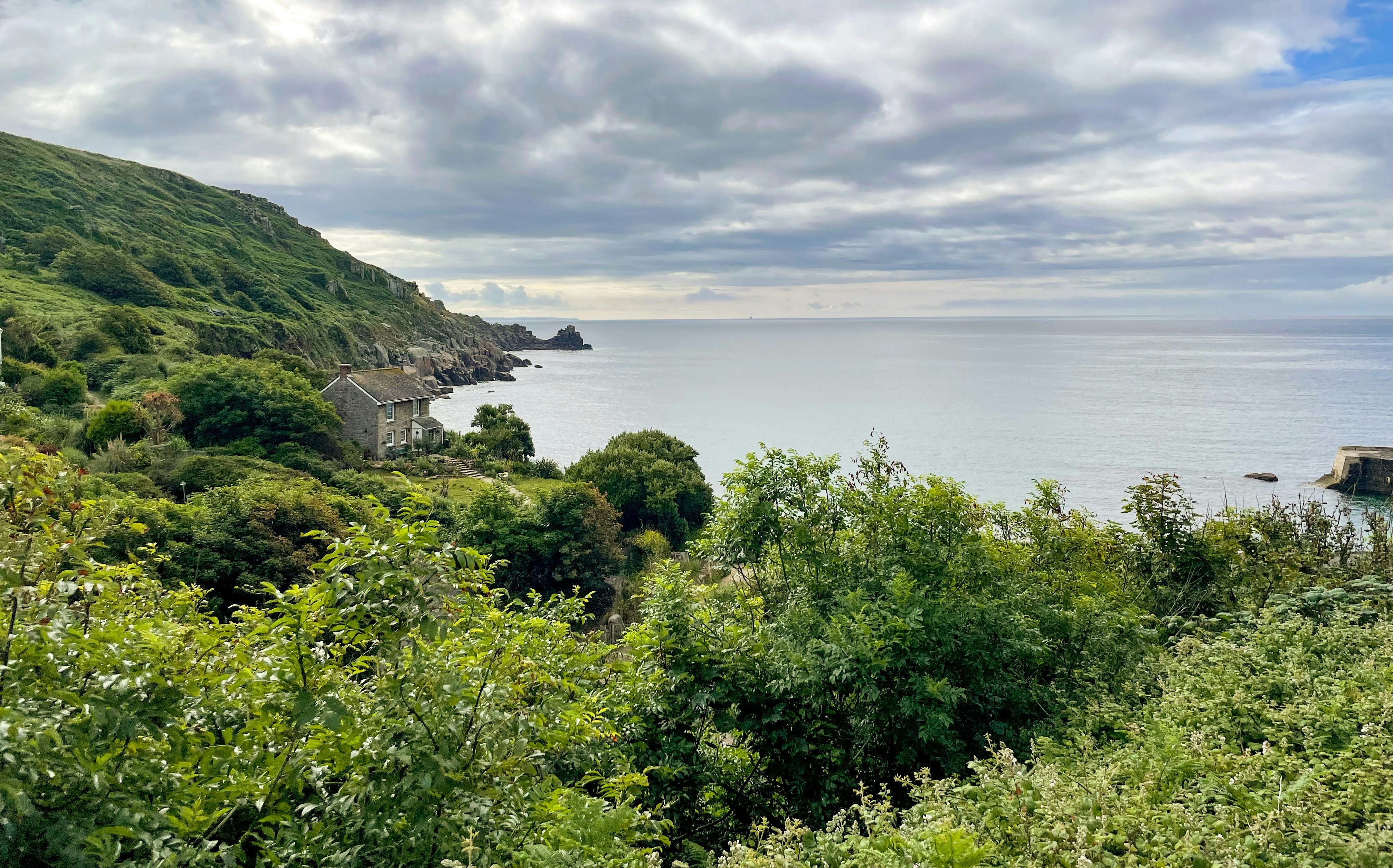Want to skip the traffic on your next visit to beautiful Cornwall? Hop on the Night Riviera sleeper train from London Paddington.
Not far from midnight, London’s Paddington station is settling down for the night.
The final commuter services to the Thames Valley are taking on their mix of late-staying evening workers and post-party revelers. Beneath Brunel’s soaring curves of white-painted metal and glass, food stalls are shutting down. Paddington Bear himself, cast in bronze near the spot where he first arrived in London, stands ever-ready for an adventure – but for a few hours at least can take a breather from the queues of people wanting to snap a selfie and rub his already-shiny nose.
Just past our ursine hero’s statue on platform 1, however, a little-known adventure is readying itself to stealthily creep southwest on its nightly mission. Every night of the week except Saturdays, the Night Riviera heads from London to the end of the Great Western Railway in Penzance, the main town of West Cornwall and 11 miles from Lands End. At this railhead, Britain fizzles out into the roaring waves of the Atlantic Ocean.
The 255-mile (410 km) route takes eight hours by night – almost three hours more than day trains, allowing passengers a good snooze. While it is the (much) slower option, the Night Riviera has endured since Victorian times. Along with its Scottish counterpart, it makes up one of two services in the UK to have survived into today’s era of fresh enthusiasm for sleeper trains.
Another way to get to justifiably crowded Cornwall

The benefits of this journey are about more than nostalgia. Cornwall is one of the UK’s most beautiful areas, with golden beaches and seaside villages linked by dramatic, deeply oxygenating cliff walks, rocky, wave-bashed coves and haunted upland moors straight out of Poldark. The region has a history and identity quite distinct from elsewhere in the UK, including its own language, which is enjoying a revival. Cornwall is also a contentious place at the heart of the conversation about overtourism the UK, with scarce housing stock coveted by wealthy owners of second homes and vacation-property businesses, especially in desirable coastal locations.
As anyone who’s visited will attest, most of the huge number of visitors who come here drive down clogged motorways to ever-smaller A and B roads, then spend their holidays scrapping for space in small parking lots and along even smaller streets. Thankfully, there is an alternative: this lesser-known British night train.
On board the Night Riviera

At the head of the Night Riviera carriages, looking and sounding every inch like a villain from Thomas the Tank Engine, is Totnes Castle, a no-nonsense diesel engine resting with a brooding thump-thump-thump soon to transform into a throaty roar through the night. Behind this green beast come an eclectic variety of carriages. The Guards Van had plenty of space for my bike and others’; slots can be booked in advance for free.
Unlike the six-berth couchettes and four-bunk sleepers that dominate continental Europe, most of the Night Riviera (like the Caledonian Sleeper) is made up of two-berth sleepers of the kind I had reserved. If the passenger has opted for sole occupancy (for an additional fee) then the top bunk is put away. These compartments have a window, sink, luggage space and are locked by a key card, which is provided by an attendant who met me on boarding and showed me around. Those other essentials for life – water and w-fi – are both on offer. Sleeper berth passengers are also able to use the lounge at Paddington, and I was also offered the chance to take a shower upon arrival in Penzance.

This is not a service exclusively for horizontal travelers, however: two seated carriages were well used on the night I was traveling. A sleeper ticket does get you access to the lounge car, though, which is the social hub of the train. While some snacks and soft drinks are provided free, many travelers were having something stronger for a nightcap and chatting about the train and the journey.
As boarding started starting around 10:30pm, many passengers were fast asleep by the time the 11:45 departure time rolled around. Being a humble researcher, I was unable to let myself sleep until we pulled out (a few minutes behind schedule) but dozed off immediately as the train started moving. I slept through the halt at Reading, another stop where passengers can board. Being a point-to-point night service, rather than one interlinking with others like many trains on mainland Europe, the Night Riviera is not subject to the back-and-forth clanking and shunting that accompanies many of those journeys. This might be why I had the best sleep of any of the night routes I’ve been on, waking up as we crossed the DNA-helix-shaped girders of the Royal Albert Bridge, which has been carrying trains between Devon and Cornwall since 1859.

After the great luxury of a breakfast bacon roll with a view, delivered to me in my room in the morning, I returned to the lounge car, where the prior night’s smattering of passengers had thinned out. The weather was improving as Atlantic drizzle drifted away to reveal occasional sunshine. The crew, who came across as unhurried and friendly, explained that their work routine starts in Penzance, where they’re based. They take a day service from there to London to then return home, working overnight.
Waking up on the Cornish coast
Once in Cornwall, the Night Riviera stops frequently, in many cases connecting with branches that radiate out to useful destinations for car-free visitors. The surf mecca of Newquay can be reached with a change at Par. From the county’s only city, Truro – where the train passes the striking Gothic-style cathedral that dominates the city – a line ambles away to Falmouth, gateway for boats to the extremely scenic Roseland Peninsula. The last stop before Penzance, St Erth (named after the Irish saint Erc, in case you were wondering) provides a handy 15-minute connection onto St Ives, where both Tate St Ives and Barbara Hepworth Museum draw art enthusiasts. Taking the train is by far the best way to get to this beautiful beachside village.

Opposite me in the lounge, two off-duty train drivers who were taking a few days to explore the routes around here debated the skills of the driver, pointing out the lines they’re planning on riding. It was tempting to ask to tag along.
The last stretch of track before Penzance hugs the broad curve of Mount’s Bay, offering sea-front views over to St Michael’s Mount, a tidal island topped with a castle and church. We were a long way from Paddington, and yet for many of the passengers this was not the end of the line. A short stroll from the station – with, as at other locations in the region, dual-language signage in Cornish and English – is the departure quay for the Scillonian, the daily ferry to St Mary’s in the Isles of Scilly, a car-free archipelago 28 miles west of the mainland. Sailings connect with the Night Riviera.

Having strolled along to take in the enjoyable hubbub of watching this lifeline service loading and boarding, I ended my own journey at Penzance’s other timeless icon. Sitting on top of Battery Rocks, itself a launchpad for sea swimming, is the Jubilee Pool. Next to well a vast main pool – the largest in the UK at five million liters – swimmers find a geothermally heated hot-pool section.
The morning was mostly overcast, and the curving walls of the lido seemed to merge with the sky and the grayer sea water visible beyond. This was a much better way to freshen up than the shower at Penzance station. I was content to sit at a table outside the cafe and gaze out to sea, feeling a little smug I’d found a backdoor to this special place – without a traffic jam in sight.
How to make it happen
Twin-occupancy cabins cost between £32 and £75.50, with single occupancy from £42.50 and £100.50 one way. Seats on night and day services start at £43. Book early and travel at times of lower demand for best fares.














